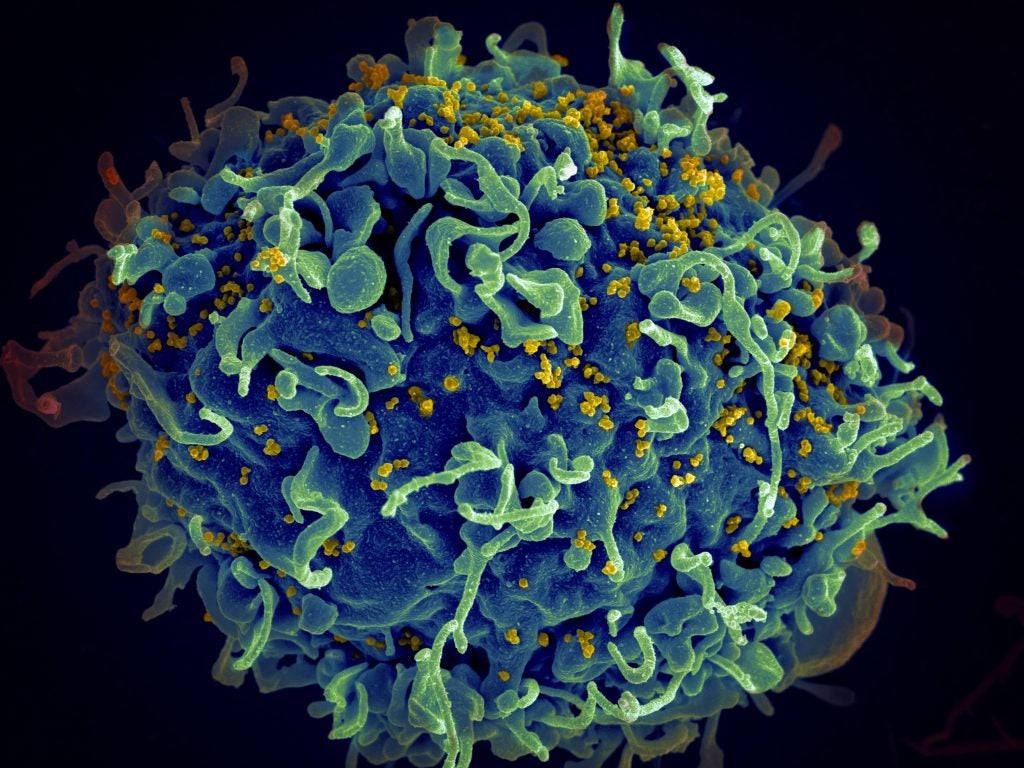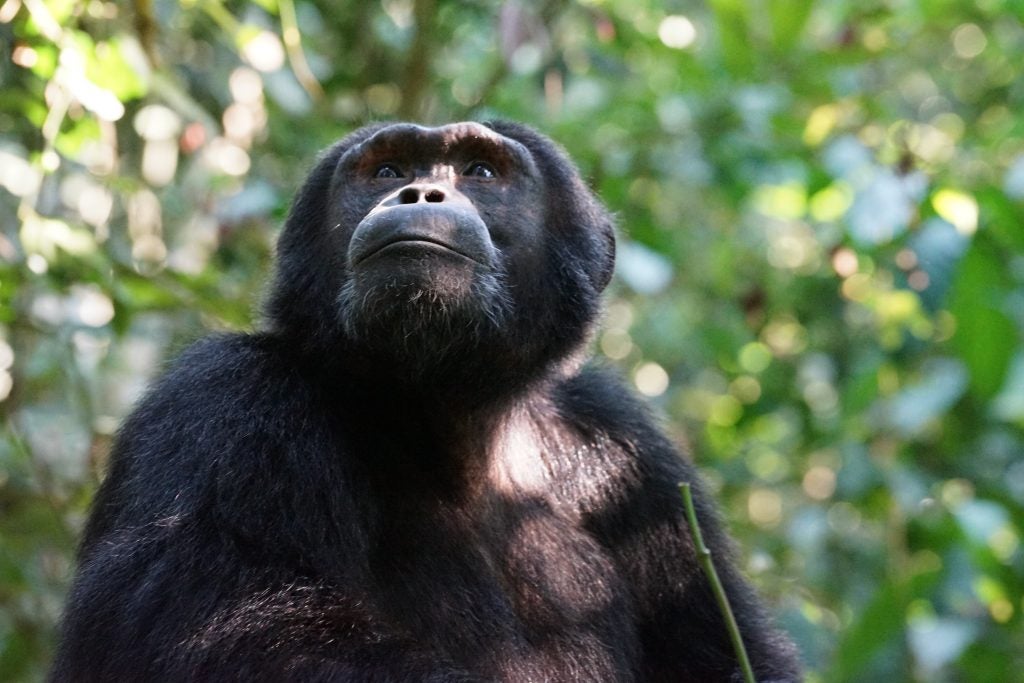Table of Contents
The Origin of HIV/AIDS
In 1981, the first reported cases of acquired immune deficiency syndrome (AIDS) came to light in the United States. After many years of research into this new disease, scientists discovered human immunodeficiency virus (HIV) and found evidence that this virus led to AIDS.1 While a novel popularized one man, Patient Zero, as the initial mass transmitter of HIV, it has become clear that the virus originated much further back in time. For a timeline of HIV/AIDS, click here.

Who was “Patient Zero”?
In 1984, a study was published linking a cluster of AIDS cases in California and New York to sexual contact between a series of homosexual partners. This study was conducted in the early days of AIDS, when researchers were still unsure how the disease spread. The report suggested that AIDS was an infectious agent that could be spread through sexual contact, needle sharing (common among intravenous drug users), and blood products. Patient Zero, later identified as Gaetan Dugas, was said to be the link between AIDS patients in both Southern California and New York City. He was tied to about 40 of the first 248 cases of AIDS reported in the United States. Dugas was called “Patient Zero” by the media as a result of being labeled “Patient O” throughout the study. In the study, the letter O referred to “out of California” since Dugas was known to be foreign.2

Gaetan Dugas was publicly identified as Patient Zero in a book on the AIDS epidemic called And the Band Played On: People, Politics and the AIDS Epidemic written by Shilts in 1987. Dugas was a male Canadian flight attendant for Air Canada whose extensive travel and promiscuity made it easy for researchers to single him out as the first person to bring AIDS into the United States.3 Dugas himself estimated that he had approximately 250 different male sexual partners each year.2 He continued his sexual escapades even after doctors told him that he was probably endangering the lives of his sexual partners. At this time, the American gay rights movement was gaining progress fast.10 Homosexual men were afraid to give up any of their hard-earned rights, and since little was known about the disease, efforts to prevent them from having sex seemed like a conspiracy.5 At the time of Dugas’s death in 1984, HIV had still not discovered, and Dugas was never diagnosed with AIDS. Dugas never believed that what he had was transmitted through sex.9
However, later evidence found that while Dugas was an early case, he was not the first case of AIDS. The editor of the book even admitted that facts were exaggerated in order to gain publicity, stating, “we lowered ourselves to yellow journalism.”5 Also, while the disease was spread to a large degree through the gay community, it likely occurred over a prolonged period of time and infected many others along the way.6 The problem with the “single-villain” approach was that it targeted the gay community and placed a stigma upon AIDS that made it difficult to talk about.5 Even Shilts, the author of And the Band Played On insisted that it was ridiculous to blame just one man for the spread of AIDS.9 At the same time, getting the book to a mass audience helped increase the national conversation on AIDS and create large-scale activism.5
What is HIV?
HIV is a lentivirus, meaning that it is a slow-acting virus that attacks the immune system over an extended period of time. Lentiviruses have been found in animals such as cats, sheep, horses, and cattle.6 During the early stages of HIV, known as the clinical latency period, the virus develops inside of a person with few to no symptoms. During this period, it is still possible to transmit the disease to others via bodily fluids. The clinical latency period can last up to 10 years for patients who do not undergo anti-retroviral therapy. Eventually, the HIV virus weakens the body’s immune system and creates symptoms, thus signaling the transition from clinical latency to AIDS. Symptoms can include increased risk of developing opportunistic infections such as Pneumocystis carinii pneumonia and tuberculosis. These infections occur because the body’s immune system has been weakened by the virus.7
How did HIV originate?
In 1999, a group of researchers announced that they had found a type of simian immunodeficiency virus (SIV) almost identical to the most widespread HIV strain, HIV-1. The strain was SIVcpz and was found in a sub-group of chimpanzees from West-Central Africa, the P. t. troglodytes.6 The researchers believed that two different strains of SIV infected the wild chimpanzees as a result of hunting smaller monkeys. SIVrcm came from hunting the red-capped mangabey, and SIVgsn from the greater spot-nose monkey. While each individual virus was unable to cross species and infect humans on its own, the viruses underwent recombination in the chimpanzee host to create a third type that could.11 This recombinant strain was SIVcpz, the virus that was able to cross the chimp-human species barrier to infect humans and cause AIDS.6
The HIV-2 strain corresponds to SIVsm. This strain of SIV originated from the sooty mangabey (also known as the white-collared monkey) of western Africa.6 While both strains of HIV (HIV-1 and HIV-2) share similar symptoms and eventually lead to AIDS, the strains differ in how they progress. HIV-1 is more infectious in the early stages of the disease when it is less likely to have been discovered. Because of this, HIV-1 is much more widespread around the globe. HIV-2 develops more slowly but becomes more infectious in the later stages of the disease. By this point, it is more likely that the disease has been discovered and that precautions have been made to prevent transmission. Most cases of HIV-2 occur in West Africa, and the strain is rarely found in the United States.8
How did HIV transfer between species?
Certain viruses can pass between species in a process called zoonosis. Hunting and butchering of non-human primates is the most accepted theory of how HIV transferred from chimpanzees to humans. Bushmeat hunting is hunting that targets wild animals rather than domesticated and legally controlled species. Bushmeat hunting is done for food and income purposes, but it can often lead to unsustainable harvesting of animals and illegal trade.11 Bushmeat hunting of wild game can leave a hunter susceptible to cuts and wounds. These cuts can lead to the transmission of viruses if the hunter is exposed to the blood of the animal he or she wounds. Usually, the hunter’s body fights off any incoming viruses easily, since the viruses are not adaptable to a human’s body. Occasionally, however, a virus may cross species and adapt within its new host. Transmission of viruses from non-human primates plays the greatest threat because these animals have a more similar genetic make-up to humans than other domesticated animals that we share contact with. Since the genetic make-up is similar, it is easier for the virus to adapt.6
In the case of HIV-1, a hunter was probably exposed to the blood of a chimpanzee with the SIVcpz virus. Once the virus entered the hunter’s blood stream, it adapted to the hunter’s body and became HIV-1. There are four different strains of HIV-1, including HIV-1 group M, N, O, and P. These four groups each have a slightly different genetic make-up and probably represent four separate viral introduction events during which hunters were exposed to the SIVcpz virus. In each case, while the SIV virus adapted to the host body to form HIV, the adaptations occurred in slightly different ways.
A study in 200412 found that natural zoonotic retrovirus transmission is still occurring in central Africa. It is important to stop primate bushmeat hunting in order to decrease the frequency of inter-species virus transmission and help prevent the occurrence of another epidemic like AIDS.12

When did transmission of HIV first occur?
The earliest known cases of HIV-1 infection were found in the following samples:
- A blood sample taken in 1959 from an adult male in the Democratic Republic of the Congo.
- A lymph node sample taken in 1960 from an adult female also from the Democratic Republic of the Congo.
- A tissue sample from an American teenager who died in St. Louis, Missouri, in 1969.
- A tissue sample from a Norwegian sailor who died in 1976.
These samples show that HIV-1 was present in the United States before cases were first reported in 1981. A study done in 200813 compared the genetic sequences of the samples taken in 1959 and 1960 and found significant genetic differences between the two. This suggests that the virus had been present in Africa much earlier than the 1950s; the researchers believe that it began circulating in Africa at the beginning of the 20th century. The researchers also believe that the virus originally showed patterns of slow growth, but the rise of cities and trading centers in Central Africa may have accelerated the transmission of the disease.13
A 2003 study14 of HIV-2 suggested that zoonotic transmission from sooty mangabeys to humans occurred around the 1940s. The researchers believe that the virus spread with the Guinea-Bissau war of independence. This country is a former Portuguese colony, and the research is supported by the fact that the first European cases of HIV-2 were found in Portuguese veterans of the war.14
How did HIV spread to the United States?
While research suggests that HIV originated in Africa, it is still unclear how the virus spread to America. However, recent research reveals that the virus may have arrived at the U.S. through the Caribbean island of Haiti. Cases of HIV-related illnesses were first reported in Haiti in the 1980s, at the same time that cases were first being reported in the United States. Since little was known about the new virus, a lot of prejudice and blame was directed towards Haiti. Haitians were considered at high risk for AIDS, and many Haitian immigrants lost their jobs. Due to the political sensitivity of the subject, much research into Haiti’s relationship to the transmission of AIDS was dropped.

However, in 2007, a group of researchers presented data in which they found that HIV-1 group M subtype B (the most common strain found in the United States and Haiti) had probably been brought to Haiti in 1966 by a worker returning from Africa. The virus slowly spread through individuals on the island and was eventually brought to the United States some time between 1969 and 1972.15 The virus was probably present in the United States before this instance, but this time, it took hold and caused an epidemic.6
HIV transmission occurred so rapidly due to a combination of various travel and health practices. As travel became easier and more common, it was simple for the virus to spread across towns, countries, and even continents. Blood transfusions also played an important role. At the time, blood transfusions remained unscreened, and there were many instances where those who received transfusions became HIV positive. Intravenous drug users exposed to unsterile needles also faced an increased risk of transmission.6 As of 2004, intravenous drug use still accounted for about one-fifth of HIV infections in the United States. Syringe exchange programs are an effective strategy to decrease the transmission of HIV and other blood-transmitted infectious diseases.17 Because anal intercourse carries a higher risk of transmission than vaginal intercourse (18x higher rate of transmission)16, the virus was able to spread quickly once it was introduced to the gay community. Gay bathhouses provided convenient areas for promiscuous sex and aided in the rapid and widespread transmission of the virus.
It is important to note that the early transmission of HIV was not the fault of any single individual or group. At the time, there was little known about the virus, and no infected individual could have known that they were exposing others to the disease.6 However, according to a 2012 study18 by the CDC, about 14% of HIV-infected individuals in the United States are still unaware of their infection. It is important that you and your partner get HIV-tested regularly, and use safe sex practices to decrease the risk of sexual transmission of HIV.18 You can reduce your risk of HIV transmission through sex by using a male or female condom correctly each time you have intercourse, practicing only non-penetrative sex, and limiting your number of sexual partners.19
References
1. “A Timeline of AIDS.” AIDS.gov, 2011. Web. 26 Dec. 2014. <http://aids.gov/hiv-aids-basics/hiv-aids-101/aids-timeline/>.
2. Auerbach, D.M.; W.W. Darrow, H.W. Jaffe, and J.W. Curran (1984). “Cluster of cases of the acquired immune deficiency syndrome. Patients linked by sexual contact”. The American Journal of Medicine 76 (3): 487–92. doi:10.1016/0002-9343(84)90668-5. PMID 6608269.
3. “Science Museum. Brought to Life: Exploring the History of Medicine.” ‘Patient Zero’ Gaetan Dugas (1953-84). Science Museum, n.d. Web. 26 Dec. 2014. <http://www.sciencemuseum.org.uk/broughttolife/people/patientzero.aspx>.
4. Babineau, Guy. “Patient Zero: Hero or Criminal.” Patient Zero: Hero or Criminal. Positive Living Society of British Columbia, 26 Apr. 2011. Web. 26 Dec. 2014. <http://www.positivelivingbc.org/news/110427/patient-zero-hero-criminal>.
5. Sapatkin, Don. “AIDS: The Truth about Patient Zero | Toronto Star.” Thestar.com. The Star, 6 May 2013. Web. 26 Dec. 2014. <http://www.thestar.com/news/world/2013/05/06/aids_the_truth_about_patient_zero.html>.
6. “Origin of HIV & AIDS.” Origin of HIV & AIDS. Avert, 2014. Web. 31 Dec. 2014. <http://www.avert.org/origin-hiv-aids.htm>.
7. “Signs & Symptoms.” Signs & Symptoms. AIDS.gov, 19 Dec. 2013. Web. 01 Jan. 2015. <https://www.aids.gov/hiv-aids-basics/hiv-aids-101/signs-and-symptoms/>.
8. Joan, Ben. “Difference Between HIV 1 and HIV 2.” Difference Between HIV 1 and HIV 2. Difference Between, 9 June 2011. Web. 01 Jan. 2015. <http://www.differencebetween.net/science/health/disease-health/difference-between-hiv-1-and-hiv-2/>.
9. Babineau, Guy. “Gaétan Dugas and the ‘AIDS Mary’ Myth | Daily Xtra.” Gaétan Dugas and the ‘AIDS Mary’ Myth | Daily Xtra. DailyXtra, 9 Nov. 2007. Web. 01 Jan. 2015. <http://dailyxtra.com/ottawa/news/ga%C3%A9tan-dugas-and-the-aids-mary-myth-9266>.
10. “Milestones in the American Gay Rights Movement.” PBS. WGBH Education Foundation, 2013. Web. 02 Jan. 2015. <http://www.pbs.org/wgbh/americanexperience/features/timeline/stonewall/>.
11. Elizabeth Bailes, Feng Gao, Frederic Bibollet-Ruche, Valerie Courgnaud, Martine Peeters, Preston A. Marx, Beatrice H. Hahn, and Paul M. Sharp “Hybrid Origin of SIV in Chimpanzees” (13 June 2003)
Science300 (5626), 1713. [DOI: 10.1126/science.1080657]
12. Wolfe ND, Switzer WM, Carr JK, Bhullar VB, Shanmugam V, et al. . (2004) Naturally acquired simian retrovirus infections in Central African Hunters. The Lancet 363(9413): 932–7 [PubMed]
13. Worobey M, Gemmel M, Teuwen DE, Haselkorn T, Kunstman K, et al. (2008) Direct evidence of extensive diversity of HIV-1 in Kinshasa by 1960. Nature 455: 661–664. [PMC free article] [PubMed]
14. Lemey P, Pybus OG, Wang B, Saksena NK, Salemi M, et al. (2003) Tracing the origin and history of the HIV-2 epidemic. Proc Natl Acad Sci U S A 100:6588–6592. [PMC free article] [PubMed]
15. Carter, Michael. “CROI: Haiti Is the Source of HIV Subtype B.” Aidsmap, 2 Mar. 2007. Web. 01 Jan. 2015. <http://www.aidsmap.com/CROI-Haiti-is-the-source-of-HIV-subtype-B/page/1426454/>.
16. Boskey, Ph.D. Elizabeth. “Why Are HIV Rates Higher in Gay Men?” About Health. N.p., 16 Dec. 2014. Web. 01 Jan. 2015. <http://std.about.com/od/glbtcommunity/a/Why-Do-Gay-Men-Have-An-Increased-Risk-Of-Hiv.htm>.
17. “Assessing Syringe Exchange Programs.” Syringe Exchange Programs (2005): 1081-082. CDC. Dec. 2005. Web. 1 Jan. 2015. <http://www.cdc.gov/IDU/facts/AED_IDU_SYR.pdf>.
18. “HIV in the United States.” Centers for Disease Control and Prevention. Centers for Disease Control and Prevention, 25 Nov. 2014. Web. 01 Jan. 2015. <http://www.cdc.gov/hiv/statistics/basics/ataglance.html#ref1>.
19. “Closing the Treatment Gap for Children Living with HIV.” WHO. World Health Organization, Dec. 2014. Web. 01 Jan. 2015. <http://www.who.int/hiv/en/>.
Last Updated 26 January 2015.
